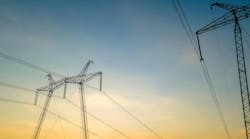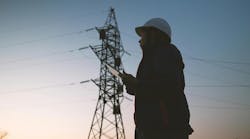Hughes Brothers, a Nebraska-based manufacturer of utility infrastructure used in more than 100,000 circuit miles of overhead construction, shares practical insights for utilities.
#1. Plan Realistically: Focus on T&D Infrastructure.
While it’s easy to understand why the prospect of malicious physical or cyber- attacks provoke much discussion, the reality is that most outages utilities face involve natural events damaging their transmission and distribution infrastructure. Weather-related power outages cost the U.S. economy $25 to $55 billion annually.
The “D” portion of the T&D system is particularly impacted. In an April 2016 testimony to the U.S. Congress, Energy Policy Specialist Richard Campbell explained , “Most failures of the grid occur in local distribution systems rather than bulk power transmission systems, as the rights-of-way for transmission lines are wider and are cleared to prevent damage from trees.” Yet massive storms may affect both.
Improving the way we protect and replace T&D infrastructure can help. The December 2016 White House report National Electric Grid Security and Resilience Action Plan cited a national need to better identify infrastructure equipment requirements and dependencies during emergencies and set a one-year deadline for a “study identifying supply chain vulnerabilities during an electric grid emergency.”
#2. To Stockpile or Restock? Preparation is Vital to Smart Recovery.
Utilities must evaluate the condition of their existing infrastructure. The Edison Electric Institute (EEI) 2014 report, Before and After the Storm, recommends utilities “identify the most critical elements, the worst performing components, those units that have aged and weakened or those elements most in danger of failure and work to replace them with improved system designs such as composites, guying, stronger pole classes or relocation to name a few.”
“If utilities are aware of an impending storm or weather-related event which may cause outages, they are expected to make preparations for restoration of services in as timely a manner as possible” says NEMA’s Storm Reconstruction Rebuild Smart Book, a 2014 analysis of multiple studies on outage restoration.
Armed with this knowledge, utilities can pre-order vital T&D infrastructure, avoiding the competition for resources that can follow a widespread or mass outage. “As part of storm response and restoration,” EEI’s report notes, “Multiple studies suggested that utilities must have adequate backup restoration supplies such as poles, wires, transformers and other system components that are on location in storage or are easily obtained through contracts with suppliers.”
Kits can help. NEMA’s Smart Book notes that “Since many facilities are older and may include electrical equipment from a variety of electrical vendors, look for sources that have the certification or other demonstrated proficiency to repair, renovate and renew the electrical equipment installed at your facility.”
Hughes Brothers has been bundling structure kits for customers for many years – including everything from single pole distribution cross arm kits to massive 345kV H-frame kits. A complete recovery kit like Hughes’ can help here, too, since it includes items gathered from multiple providers into complete packages with everything needed to complete recovery.
#3. Staging Makes the Difference
Recovery from even a local outage requires complex management of workers and equipment; following a mass outage, the scenarios are even more challenging. “Having crews, equipment and resources safely positioned before the storm allows for a quicker response and avoids waiting for crew to arrive from outside the affected areas, says EEI’s Before and After the Storm. “However, for those crews that do arrive from out of town, standby equipment and restoration materials are already gathered and organized for immediate response.”
NEMA’s Smart Book emphasizes the work management needed: “Make sure contracted support organizations have expertise in staging of support equipment including generators, replacement electrical equipment and satellite networks.”
The bundled approach can provide a vital improvement in both equipment and work management.
Utilities can get complete storm kits delivered at each individual structure location – pole by pole, for example -- on site, all staged and ready. It’s a great benefit to work management, especially when dealing with out-of-town crews, since it eliminates confusion and the need to gather items from scattered locations.
Preparedness and Recovery: The Ongoing Need
It’s always going to be a priority for utilities to manage contingencies and enhance response and recovery abilities. It was a 1921 ice storm that propelled former construction contractor Hughes Brothers to mobilize to provide infrastructure beginning with power line hardware and crossarms, and eventually growing to more than 90,000 T&D infrastructure products. Since then, the need has only grown. “With an interconnected grid of over 450,000 miles of high voltage transmission lines (100 kV and higher), and over 55,000 substations (100 kV and larger), the targets of opportunity are endless,” writes Navigant’s Brian Harrell in “Protecting vital Electricity Infrastructure.”
Click here to learn more about storm preparation, recovery and bundling customized structural kits from Hughes Brothers.


